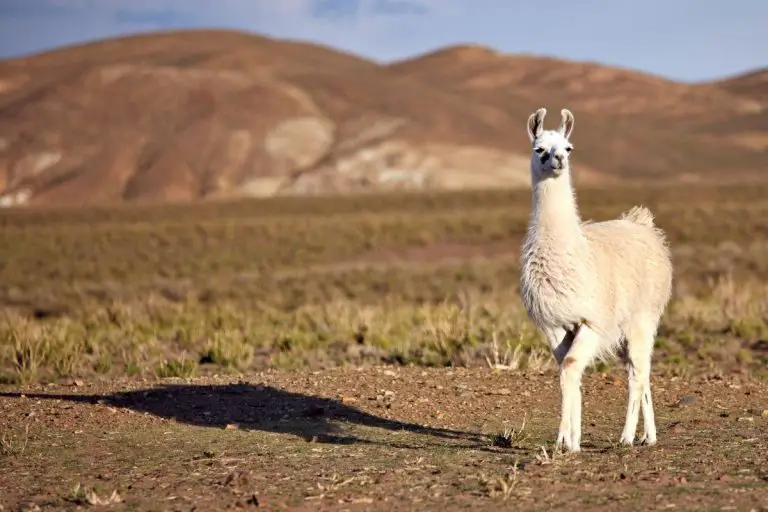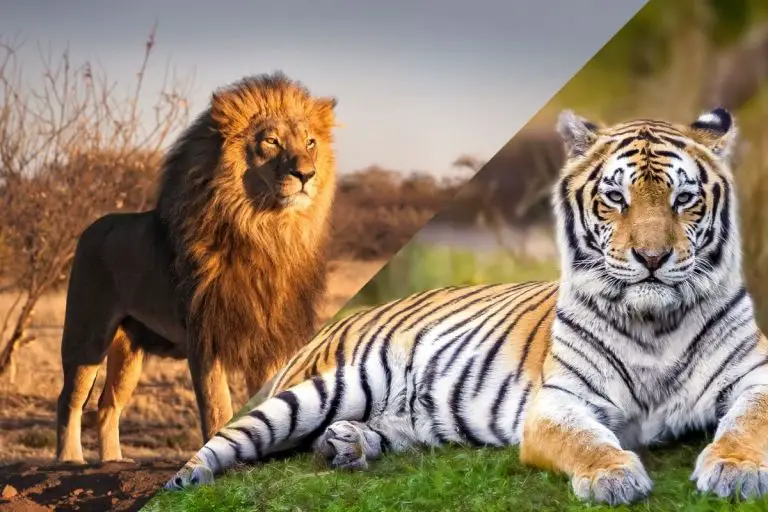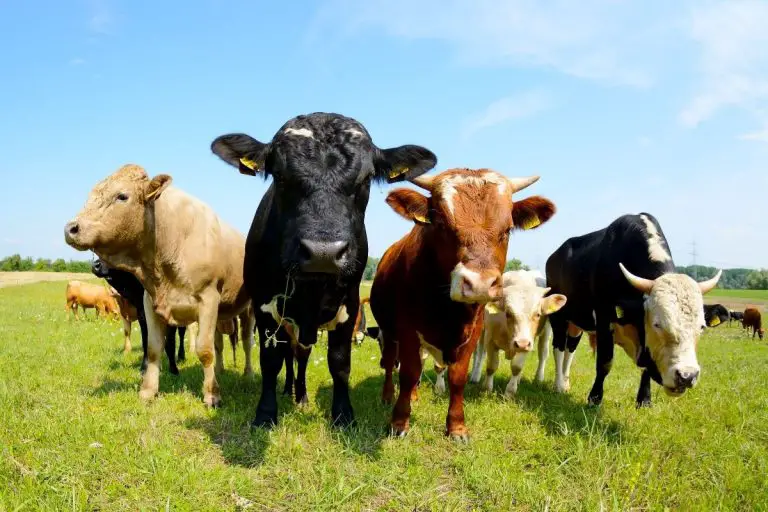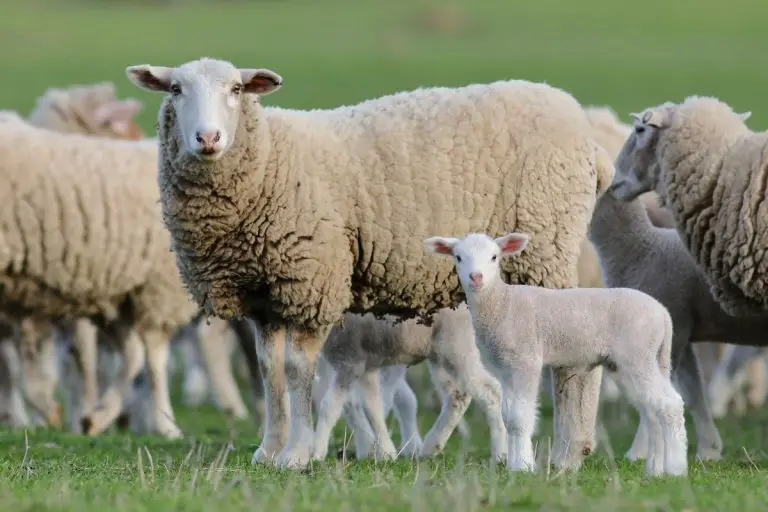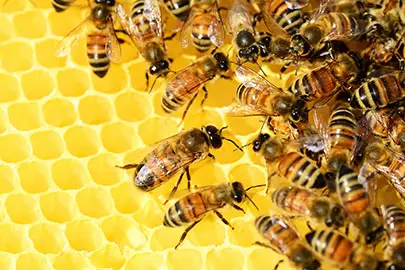What’s the difference between Bison and Buffalo?
Although bison and buffalo both belong to the Bovidae family, they are only distantly related and have many differences. Contrary to what many people believe, bison and buffalo are two unique animals. This article will contain lots of information about each animal and their significant differences.
The main difference is that Bison are found in North America and Europe, while buffalo are found in Asia and Africa. Bison have small horns while buffalo have large curved horns. Bison have a thick coat which they shed for the summer months, and buffalo have a thinner coat that does not shed.
That’s it for the short answer, but the sections below will include more details on these animals and their differences!
Bison
General Information/Characteristics
The American bison is the largest terrestrial animal in North America. They have typical cloven hooves, and have a similar appearance to other bovines such as cattle.
Bison are broad and muscular, with a massive head, large shoulder hump, and small horns. American Bison are typically around 6.6 feet tall, 11.5 feet long, and between 880-2800 pounds.
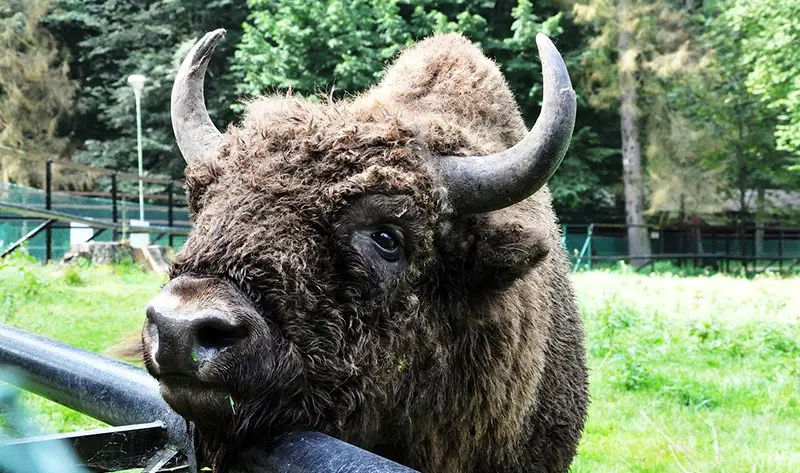
Their coats change with the seasons; growing long for the cold of winter, and shedding for the warmth of summer, except for the fur on their shoulders, head and bear, which stays long year around.
The bison found in Europe, commonly called Wisent, are very similar, but typically weigh 930-2200 pounds and are a few inches taller. Unfortunately, the American bison have poor eyesight, which they make up for with acute hearing and a great sense of smell.
Behavior
As visitors to Yellowstone know best, bison are unpredictable. Although they may appear slow and clumsy, they can run at speeds of 35 mph, and are surprisingly nimble.
They also lack strong warning signs, so they may seem unconcerned or uninterested one minute, and aggressive and ready to attack the next.
Although their horns are obvious weapons, their massive skulls may be even more dangerous since they can be used as battering rams. They can also kick hard enough to maim or kill other bison or predators. They also spend time rubbing, rolling, and wallowing.
Location/ Habitat
In the Pliocene Epoch, over 400,000 years ago, bison made their way to North America by crossing the land bridge. They are now known for living in the Great Plains but previously roamed as far south as Mexico.
Similarly, the European bison, or Wisent, historically used to roam most of the lowlands of Northern Europe. All the wild bison were unfortunately wiped out shortly after World War I, but could be repopulated by releasing bison into the Białowieża Forest in 1952.
Today, nearly half of the worldwide population of Wisent is found in that same area between Poland and Belarus.
Life
Bison are gregarious, usually found in herds of varying sizes, although scattered mature males can be found during any season. Herds may be either mixed with females and males, or just a small group of males.
The social structure of the mixed herds is typically a matriarchy, led by the cows, and protected by the bulls. Young males usually leave their family herd at two or three years of age to live in a male herd. The dominant males will often live with or intermix with the females, or join a smaller band of males.
All males and females will come together during the reproductive season. Although bison are nomadic grazers, they are known to migrate to optimize their diet of grasses, woody plants, shrubs, trees, and other foods.
Bison have an easy, but not helpful relationship to humans. Enormous conservation efforts have ensured that the bison will continue to thrive and can act as a tourist attraction, but not much more.
Buffalo
General Information/ Characteristics
Similarly to bison, there are multiple different types of buffalo, both wild and domesticated. Wild water buffalo have ash-grey to black skin, a sparse covering of moderately long coarse hairs, and wide spread feet.
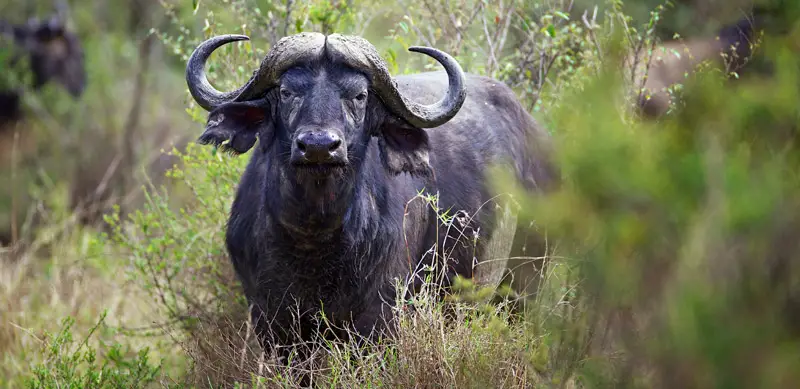
Typically, they are 5-6.2 feet tall at the shoulder, 7.8-9.8 feet long, and weigh between 1300-2600 pounds. They are much larger and heavier than their domesticated relatives, who are otherwise very similar. Although their heads are not particularly large, their horns are said to be the largest of any other living bovid, occurring in both sexes and capable of spanning 5+ feet.
The African buffalo or Cape buffalo is closely related, but are smaller, generally measuring 3.3-5.6 feet tall at the shoulder, 5.6-11.2 feet long, and weighing 1100-2200 pounds. Their horns are also shaped differently, essentially fused to the skill on the top of the head, sloping downwards, and then curving back up and capable of spanning 3 feet.

Behaviors
Water buffalo are notably docile, which is why they have been domesticated for thousands of years. In the wild, water buffalo, as their name suggests, spend most of their time near or in water; swimming, wallowing in mud, or crossing a river.
Their African counterparts, the Cape buffalo, however, are much more aggressive and have not been domesticated for that reason. They are known to engage in mobbing behavior to attack or scare off any predators, especially if a buffalo is wounded or a calf is being attacked. Males will spar in play, to establish dominance, and to settle real fights.
Somewhat surprisingly, buffalo often exhibit a type of democracy through a voting system. When deciding which direction to travel, each buffalo will stand or lie in the direction they want to go and when a majority of ‘votes’ wins, the head female will lead in that direction.
Location/ Habitat
The commonly known Wild Water buffalo or Asian buffalo is native to the Indian subcontinent and Southeast Asia, commonly found in India, Nepal, Bhutan, Thailand, and Cambodia.
They evolved to have wide feet, allowing them to live in the wet grasslands, swamps, flood plains, and river valleys they are associated with. African buffalo, although not so well adapted to walking through mud, also live in swamps and floodplains.
They prefer areas with dense cover, but can also be seen in open woodland or grasslands, as they are grazers.
Life
Buffalo are social creatures and thus live in herds. The base herds, which are mostly related females and a few dominant males, are typically surrounded by smaller sub-herds of older or lesser ranking buffalo.
Although young males mostly keep their distance from the dominant bull, they will rejoin a herd during mating season. The males will stay with the females throughout the season to protect the coming calves, and since there is safety in numbers, the dominant bull will tolerate the presence and copulation of the lesser males.
In general, buffalo are very successful grazers, and typically mow down native grasses, leaving other plants behind for more selective grazers. Both the Asian buffalo, which is commonly used as a working animal, and the African buffalo, which is a prize to large game hunters, are both greatly valuable to the people around them.
Differences between Bison and Buffalo
Differences in characteristics
Although bison and buffalo are built similarly because they are from the genetic family, Bovidae, they have some major physical differences.
To start, bison are overall larger and heavier than buffalo. The shoulder hump and massive head seen on bison give it a disproportionate physique, while buffalo have smaller heads and shoulders, making them more proportional.
Another major difference is the horns of these animals, which on bison are short and pointed upright, and on buffalo, are enormous crescents angled away from their head.
Differences in behavior
The tendency to be aggressive is one difference between bison and buffalo. Bison tend to be more unpredictable and prone to attacking, while buffalo tend to be more laid back. Wild water buffalo are even so easy going that they are optimal for domestication, and have been used as working animals for thousands of years.
A second behavioral difference is the altruistic ‘voting system’ exhibited by the females of a herd. Surprisingly, the age or rank of a cow does not matter in this scenario, as the head cow will follow the direction chosen by majority vote.
Differences in location/ natural habitats
Location is a major difference for these bovid creatures. Bison are only found in North America and Europe, while buffalo originate from Asia and Africa.
The habitats in these varying locations are also different, and the different species have evolved to benefit from their particular surroundings.
Differences in their lives
Although bison and buffalo are quite similar in their lifestyles, there are still some differences here! One major difference is the effect they have on the people around them.
Bison, although interesting to look at, do not provide any service or create an industry the way buffalo do. The Asian buffalo has been affectionately dubbed “living tractor of the East” as they do so much work in farming and transportation.
Comparison table
| Bison | Buffalo | |
|---|---|---|
| Location | North America and Europe | Asia and Africa |
| Characteristics | Massive heads, disproportionate | Proportionate with smaller heads |
| Horns | Short and pointed upright | Giants crescents angled away from their head |
| Behavior | Unpredictable, likely to attack | More relaxed |
| Role for humans | Tourist attraction, but no active role for us | Often used in farming and transportation |
Conclusion
Although bison and buffalo do have similarities, they have just as many if not more differences! With the help of this article, it is easy to see the many differences that make the two stand apart as two unique animals.
References
- Alongi, J. (2018). Buffalo Facts. Animal Facts Encyclopedia. https://www.animalfactsencyclopedia.com/Buffalo-facts.html.
- Amelinckx, A. (2018, October 18). Bison vs Buffalo: What’s the Difference? Modern Farmer. https://modernfarmer.com/2016/09/bison-vs-buffalo/.
- Buckley, G. (2020, July 10). Water Buffalo. Biology Dictionary. https://biologydictionary.net/water-buffalo/.
- Bradford, A. (2014, July 31). Buffalo Facts | Water Buffalo & Cape Buffalo. LiveScience. https://www.livescience.com/27409-buffalo.html
- Gowar, C. (2016, November 17). Cape Buffalo vs Water Buffalo: The Differences: Londolozi Blog. Londolozi Blog. https://blog.londolozi.com/2016/11/17/cape-buffalo-vs-water-buffalo-the-differences/
- McCarthy, E. (2014, October 3). What’s the Difference Between Bison and Buffalo? Mental Floss. https://www.mentalfloss.com/article/59248/whats-difference-between-bison-and-buffalo.
- McNamee, B. (2011, November 9). Hunter Safety Blog. HUNTERcourse.com. https://www.huntercourse.com/blog/2011/11/the-worlds-most-dangerous-game-to-hunt/
- National Park Service. (2020, October 22). Bison. National Parks Service. https://www.nps.gov/wica/learn/nature/bison-buffalo-bison-bison.htm.
- Wikimedia Foundation. (2020, December 2). Wild water buffalo. Wikipedia. https://en.wikipedia.org/wiki/Wild_water_buffalo#Characteristics.
- Wikimedia Foundation. (2020, December 20). African buffalo. Wikipedia. https://en.wikipedia.org/wiki/African_buffalo.
- Wikimedia Foundation. (2020, December 29). European bison. Wikipedia. https://en.wikipedia.org/wiki/European_bison.
- Wikimedia Foundation. (2021, January 2).Bison. https://en.wikipedia.org/wiki/Bison.

